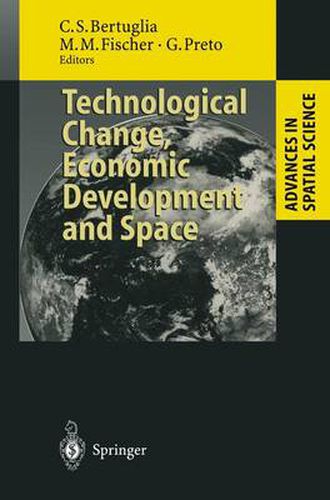Readings Newsletter
Become a Readings Member to make your shopping experience even easier.
Sign in or sign up for free!
You’re not far away from qualifying for FREE standard shipping within Australia
You’ve qualified for FREE standard shipping within Australia
The cart is loading…






This title is printed to order. This book may have been self-published. If so, we cannot guarantee the quality of the content. In the main most books will have gone through the editing process however some may not. We therefore suggest that you be aware of this before ordering this book. If in doubt check either the author or publisher’s details as we are unable to accept any returns unless they are faulty. Please contact us if you have any questions.
The pressures of global competition are affecting regions throughout the world and making it increasingly necessary to understand the complex underlying mechanisms and the potential for innovation offered by new technology. Success in economic restructuring depends not only on the technology itself, but the professional and entrepreneurial skills available and the support of provided by institutions and information networks. The very local nature these phenomena, which are critical to the innovative propensity of firms operating within the region, introduces an inevitable spatial dimension. The time therefore seems ripe to bring together contributions from scholars working in different, but related disciplines, with the aim of investigating the triangular relationship between technological change, economic development and space. The present volume offers a compact review of current theoretical developments and valuable insights deriving from recent empirical studies carried out both within Europe and elsewhere. All those contributing to this volume are actively involved in research in the field. Without their intellectual contribution and willingness to participate in this joint project, the book would not have been possible. We should like, in addition, to thank Angela Spence for her capable assistance in coordinating the various stages of preparation of the book, as well as her translation work and careful linguistic editing. Thanks also go to Paola Stasi for her meticulous copy editing and help in preparing the indices. Their work has been invaluable in moulding together in a single volume contributions from so many different sources.
$9.00 standard shipping within Australia
FREE standard shipping within Australia for orders over $100.00
Express & International shipping calculated at checkout
This title is printed to order. This book may have been self-published. If so, we cannot guarantee the quality of the content. In the main most books will have gone through the editing process however some may not. We therefore suggest that you be aware of this before ordering this book. If in doubt check either the author or publisher’s details as we are unable to accept any returns unless they are faulty. Please contact us if you have any questions.
The pressures of global competition are affecting regions throughout the world and making it increasingly necessary to understand the complex underlying mechanisms and the potential for innovation offered by new technology. Success in economic restructuring depends not only on the technology itself, but the professional and entrepreneurial skills available and the support of provided by institutions and information networks. The very local nature these phenomena, which are critical to the innovative propensity of firms operating within the region, introduces an inevitable spatial dimension. The time therefore seems ripe to bring together contributions from scholars working in different, but related disciplines, with the aim of investigating the triangular relationship between technological change, economic development and space. The present volume offers a compact review of current theoretical developments and valuable insights deriving from recent empirical studies carried out both within Europe and elsewhere. All those contributing to this volume are actively involved in research in the field. Without their intellectual contribution and willingness to participate in this joint project, the book would not have been possible. We should like, in addition, to thank Angela Spence for her capable assistance in coordinating the various stages of preparation of the book, as well as her translation work and careful linguistic editing. Thanks also go to Paola Stasi for her meticulous copy editing and help in preparing the indices. Their work has been invaluable in moulding together in a single volume contributions from so many different sources.